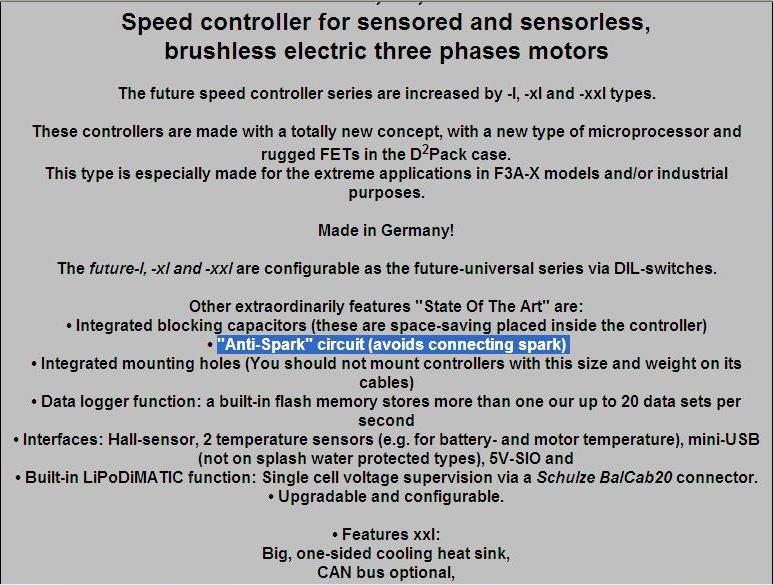For those who has R/C that required high voltage and current, do u always having "uncomfortable" feeling each time u plug in the battery and it give u a big spark and loud "Piak!" sound? Do that too often and u notice your battery connectors starting to wear out from spark (like spot welding).
I know there is a commercial version of a device to remove the big spark but I was thinking maybe we can actually develop something like that easily using the following items:
MOSFET => IRFZ44 (which is 50A, 60V)
( 2 MOSFET in parallel in order to increase the current to 100A)
A capacitor
A Resistor
What I thinking is that, the MOSFET is connect in series between ESC connector (dean, bullet) and ESC power input (in other word, separate ESC to the dean/bullet connector)
Then a high resistance resistor is in series with a capacitor. The +ve side of the capacitor is connected to the "Gate" of the MOSFET. The resistor and capacitor is connected to the dean/bullet connector.
With that, when u plug in the connector to the battery, the capacitor will slowly charge up to the voltage of the battery. It is slowly charge up due to high resistance. Once the capacitor reaches certain voltage, the MOSFET is turn ON and your ESC will have full power from battery.
I haven't test this out yet. Maybe it will work
I see whether I can test it out and let u all know the result.
SH
I know there is a commercial version of a device to remove the big spark but I was thinking maybe we can actually develop something like that easily using the following items:
MOSFET => IRFZ44 (which is 50A, 60V)
( 2 MOSFET in parallel in order to increase the current to 100A)
A capacitor
A Resistor
What I thinking is that, the MOSFET is connect in series between ESC connector (dean, bullet) and ESC power input (in other word, separate ESC to the dean/bullet connector)
Then a high resistance resistor is in series with a capacitor. The +ve side of the capacitor is connected to the "Gate" of the MOSFET. The resistor and capacitor is connected to the dean/bullet connector.
With that, when u plug in the connector to the battery, the capacitor will slowly charge up to the voltage of the battery. It is slowly charge up due to high resistance. Once the capacitor reaches certain voltage, the MOSFET is turn ON and your ESC will have full power from battery.
I haven't test this out yet. Maybe it will work

I see whether I can test it out and let u all know the result.
SH








Comment